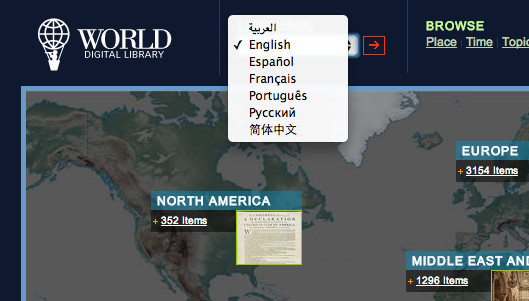Metadata standards address both what kinds of information should accompany the cultural heritage object (each field is called an element), and how those kinds of information should be described. For example, in the WDL Descriptive Metadata Element Set, it is clear not only that information about the type of item should be included, but that the type should be chosen from an allowed list of eight item types: manuscripts, books, other printed materials, maps and atlases, prints and drawings, photographs, films, and sound recordings (WDL, n.d., WDL Descriptive Metadata Element Set). Imagine if one institution referred to an oral history recording as a “sound recording,” another institution referred to its oral history as an “audio recording,” and a third institution didn’t even include an item type for its oral history recordings. Then it becomes more difficult for a search engine to efficiently find all the recordings, or to understand that different words may refer to the same item type. By agreeing on this controlled vocabulary, the participants in the WDL make it easier for people all over the world to find their materials. The WDL has its own set of metadata elements, but they match up with elements from internationally recognized metadata standards such as Dublin Core, MARC, and TEI, so that the metadata can be interoperable with systems that use those standards, greatly increasing its potential for reuse (WDL, n.d., World Digital Library Metadata).
The high-quality metadata required of WDL contributors is what makes it possible to search/browse by location / time period / topic, etc. The home page for the WDL includes both a map and a timeline, as was shown in Figure 4, making it easy for users to narrow their browsing by time period or by region. After entering a simple keyword search term, users can similarly narrow their selection by Place, Time, Topic, etc., using the menu on the left of the search results page, also known as faceted search.
But can you trust this information? A document from the 2012 Doha workshop outlines the process for creating what they call the “Expert Description;” the WDL description field is intended as a summary, answering the question “What is this object and why does it matter?” for a general, global audience. (WDL, n.d., World Digital Library Expert Descriptions). However, the “expert” in expert description implies that an expert on that specific item has either authored the entry to confirm its validity, and that is not necessarily the case. The outline indicates that if the description from the partnering institution is not sufficient and the partners’ staff can’t rewrite it themselves, WDL staff (at the Library of Congress) can write it based on information in another existing source, and then submit it back to the partner for approval. There is no indication of who has authored the description for each item, so it’s hard to know for sure if the information is trustworthy or not. It’s reasonable that users from one culture would be skeptical of descriptions of materials from their culture that are written by non-experts from another. This question of trust impacts the reuse of the items, both in the sense that people may choose not to reuse the items if they don’t trust the information about them, and in the sense that misinterpreted information may be spread around the globe if it is reused. On the other hand, material could be reused to open a conversation about a different interpretation of a work, or to provide a better context for understanding that work.
Figure 7. A screenshot from the World Digital Library home page, showing the drop down menu to choose a language for interacting with the site. From World Digital Library. (n.d.). Home. Retrieved from http://www.wdl.org/en/
Another factor increasing the potential for reuse of the WDL items is the fact that all metadata is translated into the 7 official languages of the UN: Arabic, Chinese, English, French, Russian, and Spanish (as shown in Figure 7). This increases the potential for end use, but the workflow that makes it possible may be more difficult for some contributors, as it is very Anglocentric: all work on metadata is done in English first, and then translated (WDL, n.d., Content Preparation). This is probably because the work is centered at the Library of Congress. As the project grows, it would increase the potential for contributions if the technical workflow was distributed to teams working in different languages.
